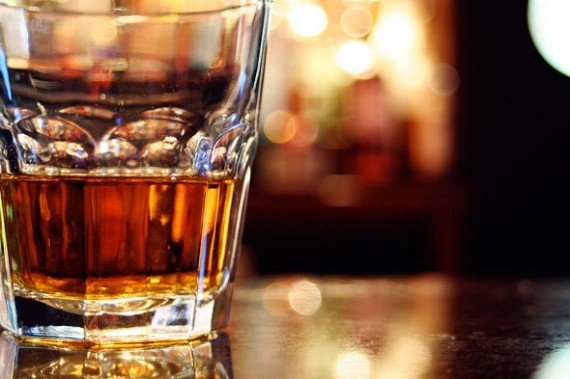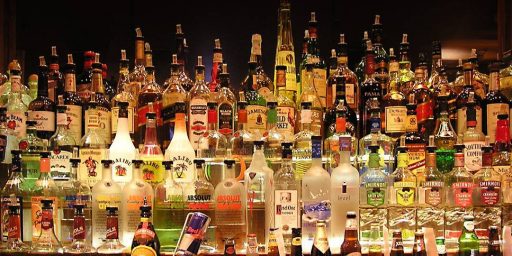It’s Science! Drinking Makes You Cool
Once again, science provides us with invaluable information:
It’s a good thing fish can’t operate a vehicle. Not only do drunk zebrafish swim extra fast, but they somehow get all the sober fish to follow them. Essentially, a drunk fish becomes the designated driver for the whole group.
Although a fish is only marginally like a human, fish can be convenient subjects for scientists who want to study the effects of alcohol. That’s because to get a fish tipsy, you don’t have to force it to drink anything. You only have to put a small concentration of alcohol into its tank.* Maurizio Porfiri, an associate professor at the New York University Polytechnic Institute of Engineering, used this technique to show last year that drunk zebrafish don’t fear robotic predators.
For his latest study of intoxicated fish, Porfiri and his coauthors had their subjects swim in three different alcohol concentrations: 0.25%, 0.5%, and 1%. The highest concentration translates to about a 0.1% blood alcohol content in the fish, Porfiri says—above the legal limit of .08% for people in the United States.
(…)
After letting each zebrafish soak for a while in a beaker of water and ethanol, he dropped it into a tank with four sober zebrafish and watched them interact for five minutes. A camera recorded the group from above so that the scientists could measure the fishes’ movements using a tracking algorithm they’d recently developed.
Alcohol-exposed fish swam faster in a group than they did alone. This might be because moderate intoxication makes them hyperactive, as earlier studies found; they may overreact to the stimulus of seeing other fish nearby. Moderate amounts of alcohol are also known to lower fishes’ inhibitions, making zebrafish more aggressive and less afraid of unfamiliar things (or predators).
Meanwhile, the four sober fish didn’t ignore their intoxicated peer as it zipped around the tank: they followed it.
There are a couple of possible explanations for this, Porfiri says. Maybe something about the drunk fish’s one-on-one interactions with the other fish made the group as a whole move in the same direction. Or maybe the sober fish looked at their non-sober tankmate and saw a leader. “It is likely,” Porfiri says, that the drunk fish’s uninhibited behavior “is perceived as a boldness trait, thus imparting a high social status.” As they followed the drunk fish, the sober ones also sped up to keep pace, swimming roughly a third faster than they would have otherwise.
Because everyone wants to hang out with the cool kids, even fish.
Don’t argue with the conclusion, it’s science!
H/T: Vodkapundit







OK. It makes a fish cool.
Not surprisingly, it made me incarcerated.
Like they say: “Every time that I drank, I did not end up in police car… But every time that I did end up in a police car, I had been drinking”.
I blame the fish.
Ah, but there’s still an important question to study: which makes you cooler, drinking or smoking?
I am being cool right now!
The problem is that fish don’t have long-term memories. You follow a drunk a few times, you learn the hard way, and you stop doing it.
May I propose an alternative theory? The sober zebrafish thought the drunk one was after a really good food source. Either that or they thought it might be running from an unseen predator. ‘Cause absent a demonstrated hierarchy, I’m having a hard time seeing “high social status”.